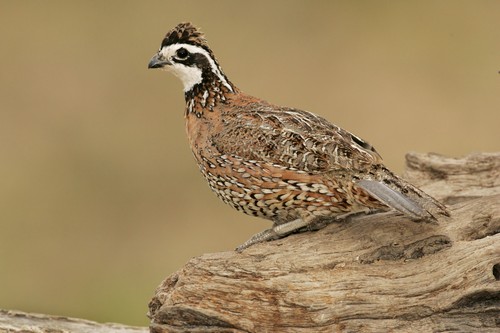How far do bobwhite quail travel? What is their range? Most quail move less than a half-mile in either direction, although quail have been documented to move several miles. One of the quail’s most noted moves comes as summer turns to fall, when successful broods year’s hatch begin to disperse and form into coveys. This movement is known as the “fall shuffle.”
During the fall shuffle, bobs are looking for long-term food sources and suitable cover. Ideally, these resources are close to one another. This is important for the winter survival of quail, as maintaining a close distance between food and cover, when herbaceous cover is lacking, greatly increases their chances of seeing the next year.
Moving Towards Winter Cover
The habitat required by quail varies throughout the year. Their breeding and chick-rearing habitat does not look the same as their wintering grounds. In the fall, woody cover is a must for environmental protection as well as structural protection from predators. Brushy cover also provides quail coveys with areas that can be used for loafing, just hanging out, during the times when they are not actively feeding.
These areas are called covey headquarters. To qualify, at least from a quail’s perspective, a covey headquarters must provide canopy cover with an open understory. This protects quail from weather and avian predators but allows them to move around. Species that serve as homes for quail consists of lotebush, skunkbush (frangrant sumac) or even shin oak.

They Can Move Out
Many hunters and land managers know that bobwhite quail can move from their summer range come fall. This larger movement does create opportunities for additional mortality, especially within juveniles. The trick — rather, key — to keeping quail is maintaining good habitat for them.
If quail can not find adequate winter habitat near their summer sites they will go and find it. It may be somewhere else on your property or it could be neighboring lands. Quail are not migratory birds, but they will move to find the good wintering habitat, habitat necessary for survival.
In fact, quail researchers have had to use aircraft to locate the birds fitted with radio transmitters in many cases, with birds ranging 20-30 miles in some instances!
Fall Surveys in Quail Range
Have the quail moved out or have they stayed put? Conducting annual fall covey counts for quail on your property will help determine the answer to that question. They will help you identify areas quail are using and also allow you to estimate quail covey size on your property.
This information will give you the advantage when it comes hunting season. But it’s just as important to know where quail aren’t on a property. If there are areas devoid of quail then this could signal potential areas for restoring quail habitat. A little management can pay big, quick benefits.